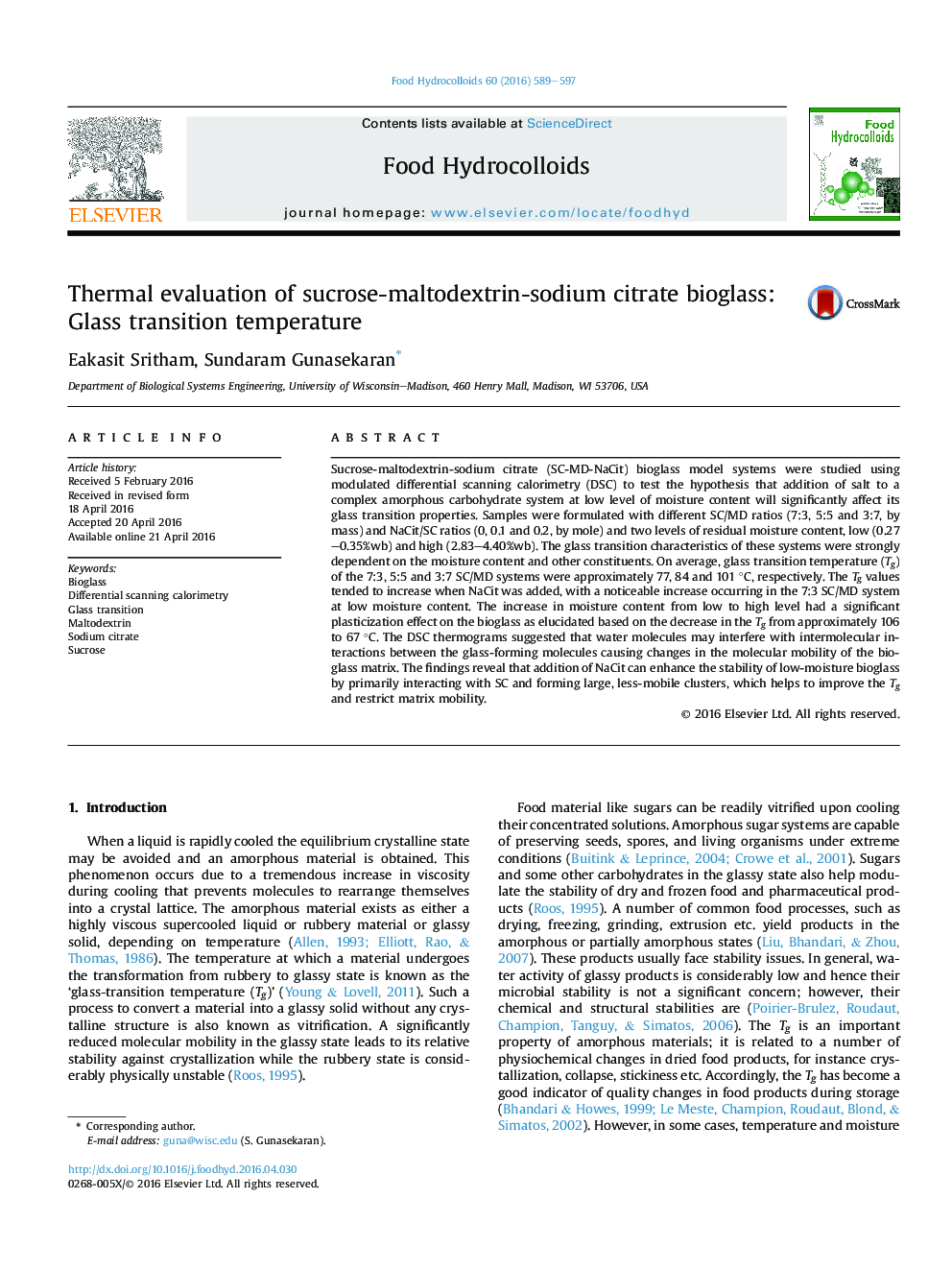| کد مقاله | کد نشریه | سال انتشار | مقاله انگلیسی | نسخه تمام متن |
|---|---|---|---|---|
| 603612 | 1454417 | 2016 | 9 صفحه PDF | دانلود رایگان |
• The Tg values were affected by all components of the bioglass system.
• These changes in Tg suggest an interaction between sodium citrate and sucrose.
• The width of glass transition zone narrowed as moisture content increased.
• The interference of water on the intermolecular interactions increased ΔCp,GT.
• The addition of NaCit can enhance the stability of low-moisture bioglass
Sucrose-maltodextrin-sodium citrate (SC-MD-NaCit) bioglass model systems were studied using modulated differential scanning calorimetry (DSC) to test the hypothesis that addition of salt to a complex amorphous carbohydrate system at low level of moisture content will significantly affect its glass transition properties. Samples were formulated with different SC/MD ratios (7:3, 5:5 and 3:7, by mass) and NaCit/SC ratios (0, 0.1 and 0.2, by mole) and two levels of residual moisture content, low (0.27–0.35%wb) and high (2.83–4.40%wb). The glass transition characteristics of these systems were strongly dependent on the moisture content and other constituents. On average, glass transition temperature (Tg) of the 7:3, 5:5 and 3:7 SC/MD systems were approximately 77, 84 and 101 °C, respectively. The Tg values tended to increase when NaCit was added, with a noticeable increase occurring in the 7:3 SC/MD system at low moisture content. The increase in moisture content from low to high level had a significant plasticization effect on the bioglass as elucidated based on the decrease in the Tg from approximately 106 to 67 °C. The DSC thermograms suggested that water molecules may interfere with intermolecular interactions between the glass-forming molecules causing changes in the molecular mobility of the bioglass matrix. The findings reveal that addition of NaCit can enhance the stability of low-moisture bioglass by primarily interacting with SC and forming large, less-mobile clusters, which helps to improve the Tg and restrict matrix mobility.
Figure optionsDownload as PowerPoint slide
Journal: Food Hydrocolloids - Volume 60, October 2016, Pages 589–597
